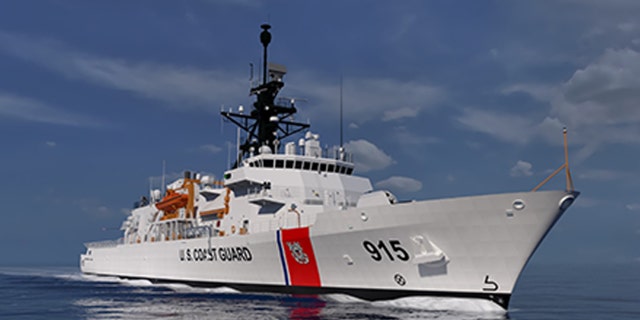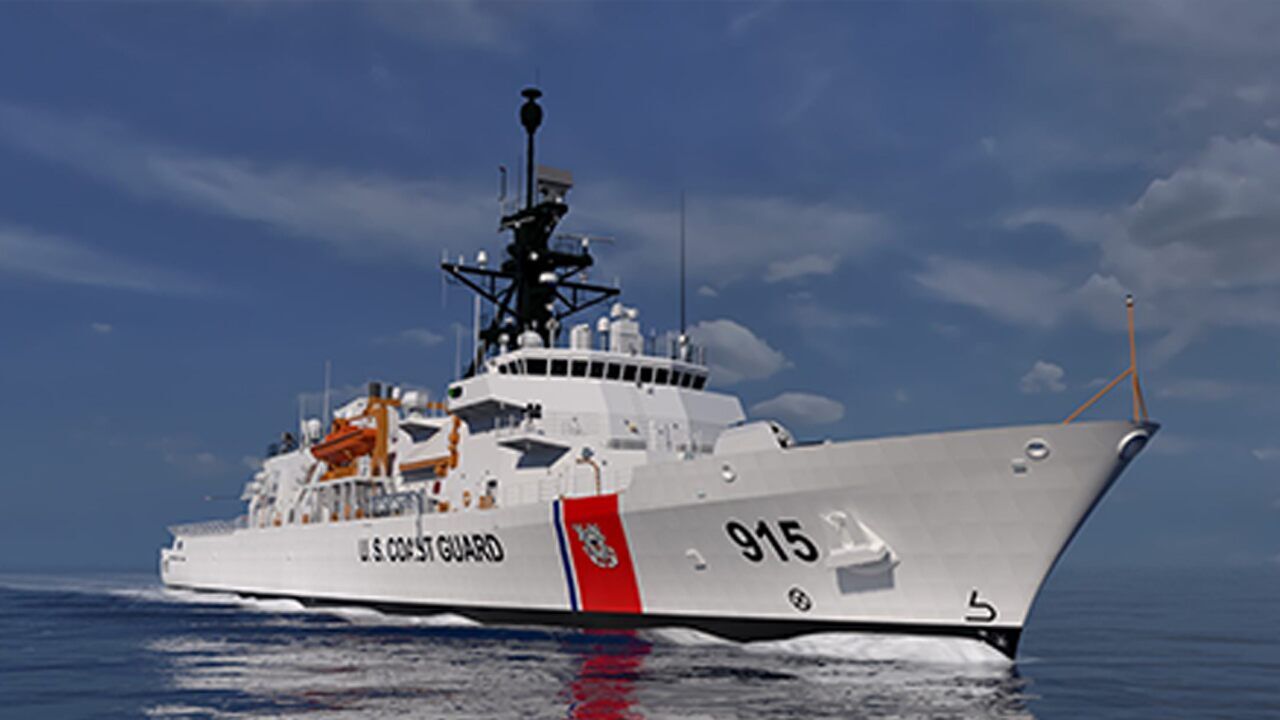The Coast Guard’s now-under-construction and rapidly emerging Offshore Patrol Cutter (OPC) ship will hit the ocean next year, bringing new strategic and tactical dimensions to homeland defense, multi-service data sharing and many pressing maritime security issues of relevance to the U.S. Navy and the Pentagon.The Coast Guard’s now-under-construction and rapidly emerging Offshore Patrol Cutter (OPC) ship will hit the ocean next year, bringing new strategic and tactical dimensions to homeland defense, multi-service data sharing and many pressing maritime security issues of relevance to the U.S. Navy and the Pentagon.FeedzyRead More
Full content below:
The Coast Guard’s now-under-construction and rapidly emerging Offshore Patrol Cutter (OPC) ship will hit the ocean next year, bringing new strategic and tactical dimensions to homeland defense, multi-service data-sharing and many pressing maritime security issues of relevance to the U.S. Navy and the Pentagon.
This ongoing construction effort consists of an initiative to engineer new dimensions of ship technology through a collaborative partnership between Eastern Shipbuilding Group and Northrop Grumman, intended to provide the C4ISR (Command, Control, Communications, Computers Intelligence, Surveillance and Reconnaissance) systems to optimize ESG’s OPC vision and design for the ship.
Working in close coordination with ESG to ensure that the ship’s technical infrastructure aligned with ESG’s structural vision for the ship, design specs and technical requirements, Northrop Grumman is building the Integrated Bridge System, an integrated set of technologies connecting the helm and control centers to the ship’s propulsion, steering and navigation. As part of its contribution, Northrop Grumman also provides the ship’s Computing Network System, Machinery Control System and Propulsion Control System along with the monitors and controls for the ship’s propulsion power plant. Interestingly, Northrop Grumman has leveraged some of the commonality with cutting edge technology it has built into other Navy and Coast Guard ships to optimize technical performance and ensure sustained upgradeability.
The advanced networking and C4ISR is of critical importance to the Coast Guard’s OPC vision, in part because the service is looking to acquire 25 new ships to replace an existing fleet of now less than 30 medium-endurance Hamilton cutters.
NAVY ELECTRONIC WARFARE STOPS MULTIPLE ENEMY MISSILE ATTACKS AT ONCE
“This is the largest acquisition in the history of the U.S. Coast Guard. We are responsible for the majority of the C4ISR capabilities on the OPC; including the command and control system, communications, navigation through the integrated bridge system, the shipboard computer network system, navigation and combat system data distribution system, surface search radars, primary and secondary gyrocompasses, as well as other navigational sensors. Our key objectives have been to deliver affordable solutions and keep the program on track,” Michael Corrigan, site director of the Northrop Grumman facility in Charlottesville Virginia, where the equipment is built and tested, told The National Interest.

Artist’s impression of the OPC.
(Courtesy of Eastern Shipbuilding Group)
A need to optimize the scope of available resources and propulsion efficiency is part of why the new ESG ship is built with an auxiliary hybrid electric-diesel propulsion systems to increase efficiency and loitering capability, a first in the CG fleet.
“If you are doing surveillance, you can use the ship service generators and electrical power to cruise at a reasonable speed to preserve your fuel,” Adm. Robert Papp (Ret.), former Coast Guard Commandant and current President of the DC offices of ESG, told The National Interest.
Papp explained that the engineering vision for the ship has, since its inception, relied upon this tactical and technical approach emphasizing networking and C4ISR to, among other things, expand the surveillance reach for medium endurance cutters. Having spent years serving on and commanding now decades-old medium endurance cutters, Papp added that their surveillance capabilities were often limited to a surface ship radar “something inside of about 20 miles.”
CLICK HERE TO GET THE FOX NEWS APP
“Now, because of C4ISR and the ability to share satellite data and aircraft data, we can make our ships smarter. Instead of just searching, you can direct ships exactly where they need to look,” Papp added.
Kris Osborn is the defense editor for the National Interest. Osborn previously served at the Pentagon as a Highly Qualified Expert with the Office of the Assistant Secretary of the Army—Acquisition, Logistics & Technology. Osborn has also worked as an anchor and on-air military specialist at national TV networks. He has appeared as a guest military expert on Fox News, MSNBC, The Military Channel, and The History Channel. He also has a Masters Degree in Comparative Literature from Columbia University.








